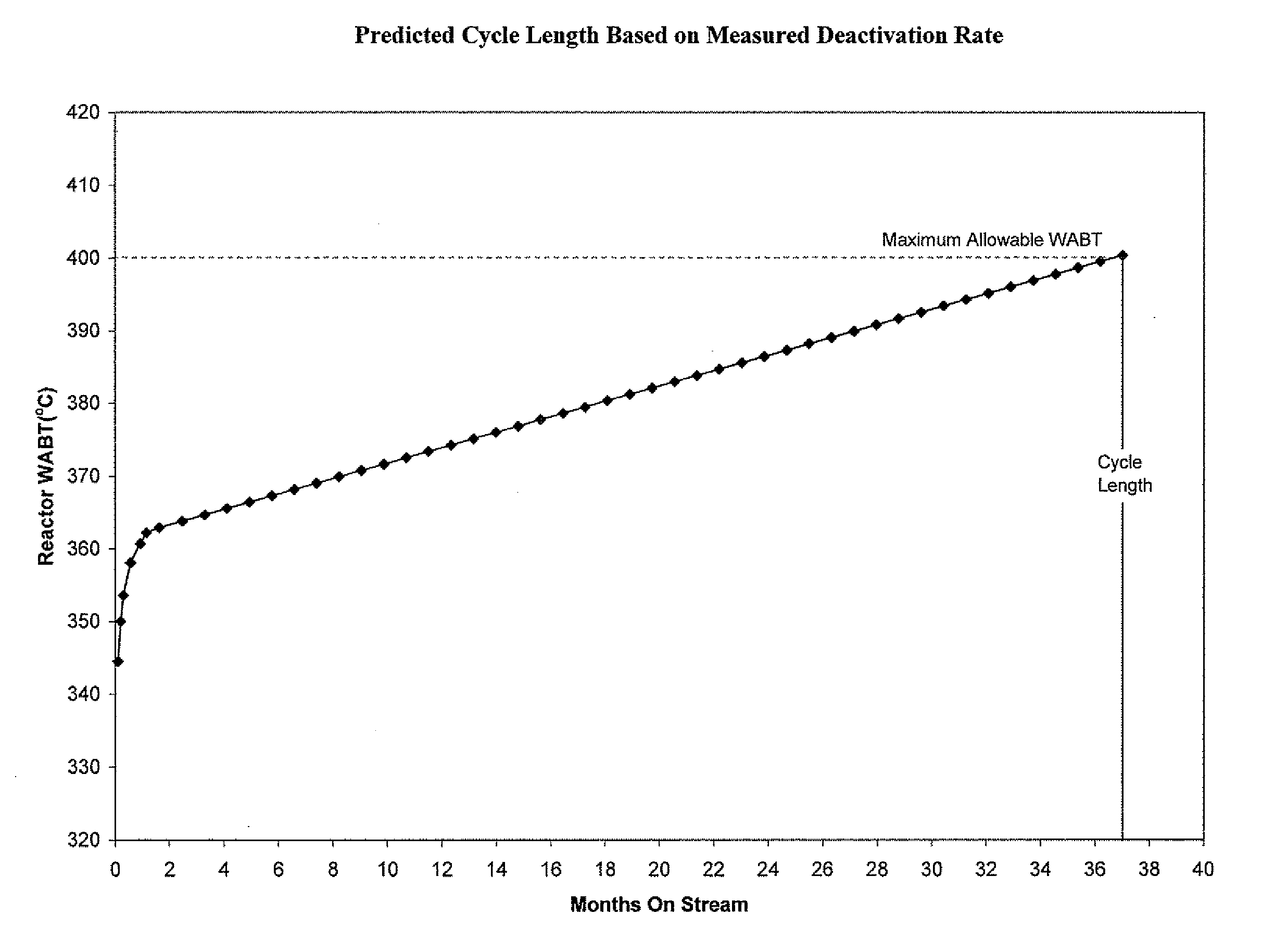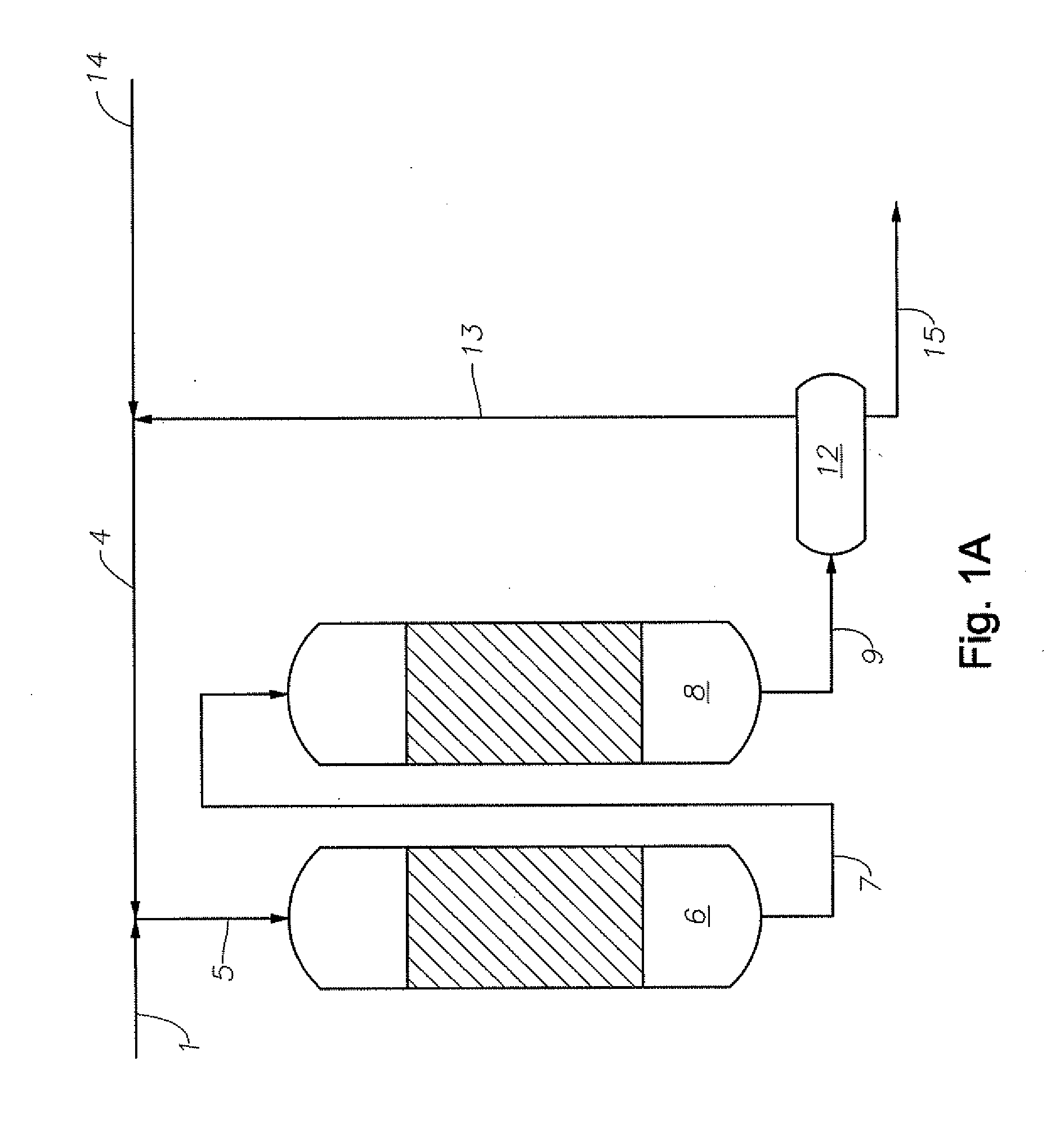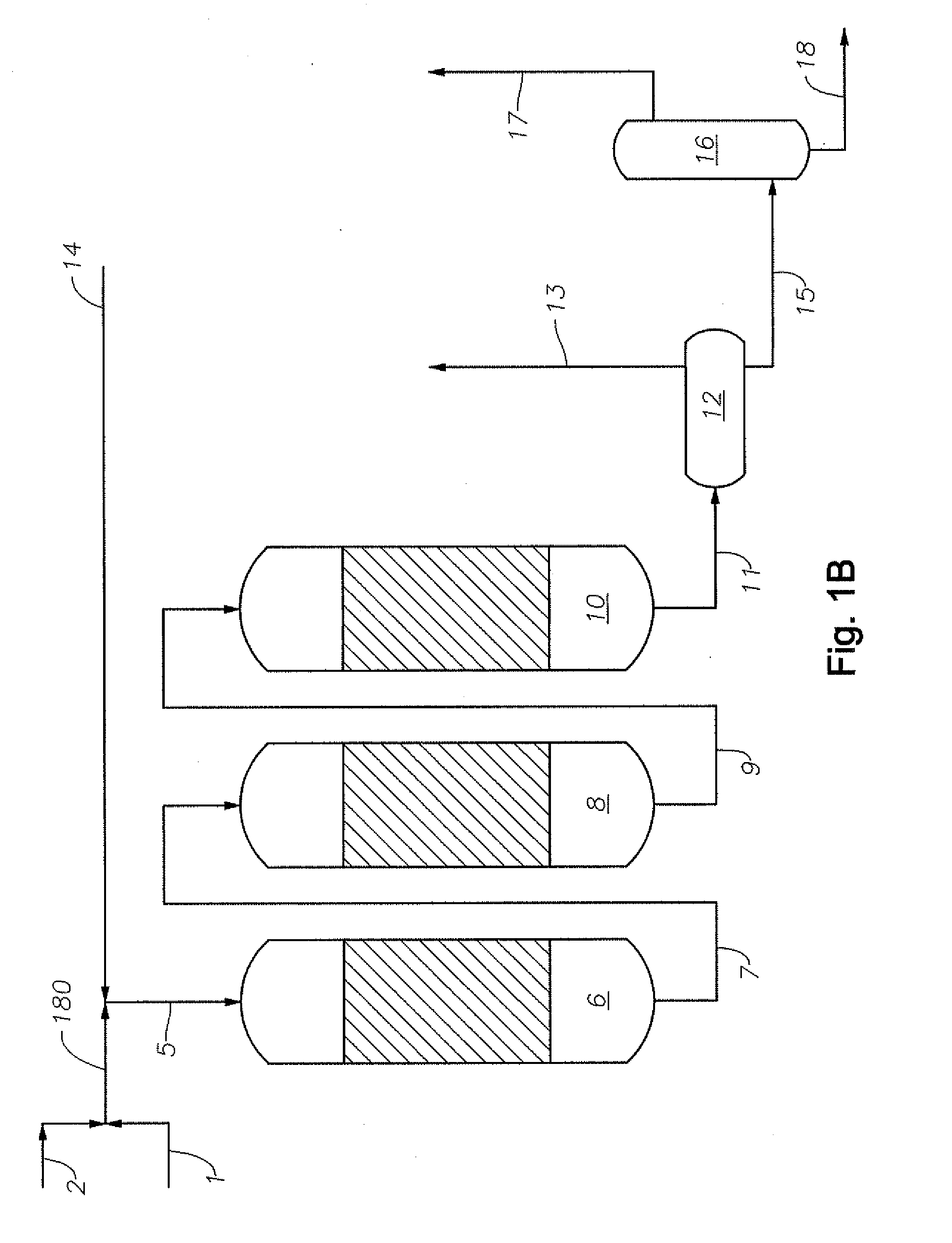Process for the Treatment of Heavy Oils Using Light Hydrocarbon Components as a Diluent
a technology of light hydrocarbon components and heavy oil, which is applied in the treatment of hydrocarbon oils, petroleum industry, hydrotreatment processes, etc., can solve the problems of increasing the complexity of molecules, limiting factors of hydroprocessing units, and the expected decrease in the availability of light sweet crudes in the future. , to achieve the effect of reducing the amount of light hydrocarbon diluen
- Summary
- Abstract
- Description
- Claims
- Application Information
AI Technical Summary
Benefits of technology
Problems solved by technology
Method used
Image
Examples
example 1
Production of a Low Sulfur Crude Oil with Increased Diesel Yield
[0033]In one embodiment of the present invention an Arabian Heavy Crude Oil with properties as detailed in Table 1 was processed by the invention. Typical fractions, light naphtha, heavy naphtha, kerosene, diesel, vacuum gas oil and vacuum residue derived from both atmospheric and vacuum distillation of the Arabian Heavy Crude Oil can be seen in Table 2 along with the individual sulfur concentrations.
TABLE 1Example 1, Bulk Properties of Arabian Heavy Export Crude OilAnalysisUnitsValueDensity at 15° C.g / ml0.8904API Gravitydegree27.4CCRwt %8.2Vanadiumwtppm54.6Nickelwtppm16.4Sulphurwt %2.8297
TABLE 2Example 1, Yields of Individual Product Fractions and Sulfur Contentfrom Arabian Heavy Export Crude OilYieldFraction(wt %)Sulfur (wt %)C1-C20.2%0C3-C40.80Light Naphtha, C5-85° C.4.60.0003Heavy Naphtha, 85-150° C.7.20.0118Kerosene, 150° C.-250° C.15.90.36Diesel, 250° C.-350° C.11.91.6829Vacuum Gas Oil, 350° C.-540° C.26.02.9455Va...
example 2
Production of a Low Sulfur Crude Oil
[0050]In one embodiment of the present invention an Arabian Heavy Crude Oil with properties as detailed in Table 1 was hydroprocessed. In this example no external diluent was required, the lighter fraction of the crude oil demonstrates the required performance advantage by diluting the heavily deactivating species in the vacuum residue fraction. Through the process of the invention, the light hydrocarbon diluent, also called the lighter fraction of the crude oil, is separated and recycled into the process until a predetermined ratio of light hydrocarbon diluent to heavy oil feed stream is acquired. The properties of the obtained sweetened crude oil can be seen in Table 2. The sweetened crude oil was obtained in a fixed bed reactor at a total pressure of 100 bar, liquid hourly space velocity of 0.5 hr−1 and hydrogen to hydrocarbon ratio of 1000 N1 / 1.
[0051]The catalyst used in the hydrodesulfurization reaction vessel was NiMoAl2O3. The catalyst used...
PUM
| Property | Measurement | Unit |
|---|---|---|
| pressure | aaaaa | aaaaa |
| wt % | aaaaa | aaaaa |
| temperature | aaaaa | aaaaa |
Abstract
Description
Claims
Application Information
 Login to View More
Login to View More - R&D
- Intellectual Property
- Life Sciences
- Materials
- Tech Scout
- Unparalleled Data Quality
- Higher Quality Content
- 60% Fewer Hallucinations
Browse by: Latest US Patents, China's latest patents, Technical Efficacy Thesaurus, Application Domain, Technology Topic, Popular Technical Reports.
© 2025 PatSnap. All rights reserved.Legal|Privacy policy|Modern Slavery Act Transparency Statement|Sitemap|About US| Contact US: help@patsnap.com



